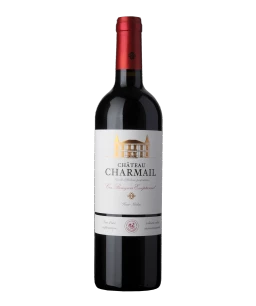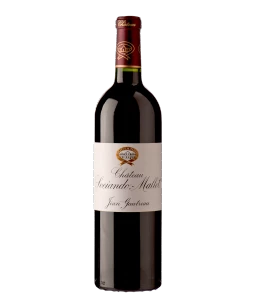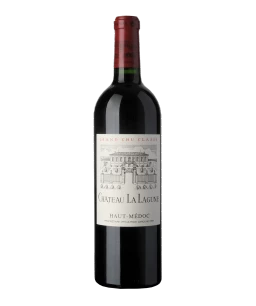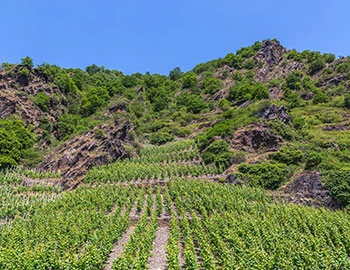Haut-Médoc
Haut-Médoc: pure Bordeaux feeling
The Médoc is a large, almost flat area, lying only a few metres above sea level. In the northern part, which lies near the Gironde estuary and was once called Bas-Médoc, simpler wines tend to result from heavy soils. The Haut-Médoc, on the other hand, comprises the more southern part, reaching up to the suburbs of the city of Bordeaux. Close to the premier crus, assemblages dominated by Cabernet Sauvignon are produced here that promise that pure Bordeaux feeling.
Red wines from Haut-Médoc
Driving upriver from the Atlantic, following the Gironde towards Bordeaux, you pass through a lowland with heavy, loamy soils, until encountering the first gravel dunes a few kilometres north of Saint-Estèphe. Here, the Haut-Médoc begins, considered the heart of the Bordeaux wine region. The deciding quality factor is the gravelly soil, which allows better drainage after rainfall. The best terroirs are located on the legendary hilltops, with their layers of gravels at best three metres thick.
Gravel makes the difference
The Haut-Médoc AOC has a total vineyard area of approximately 5,000 hectares, and comprises the four particularly prestigious commune appellations closer to the Gironde – Margaux, Saint-Julien, Pauillac and Saint-Estèphe – as well as the Listrac and Moulis appellations, located somewhat farther from the river. The best terroirs in the Haut-Médoc have the potential for quality comparable to good locations in supposedly more prestigious commune-appellations.
In the gravelly terroirs, Cabernet Sauvignon in particular can fully flesh out its range. The variety also dominates the assemblages typical here, with a proportion of usually 50 percent or more. Merlot, and to a lesser extent Petit Verdot and Cabernet Franc, are added to supplement. The microclimate also plays an important role in the quality of the wines, with the balancing influence of the Gironde (which varies here between one and five kilometres in width), as well as the extensive pine forests on the coast, which protect the area from cool Atlantic winds.
Once a wetland
The history of viticulture in the Haut-Médoc is relatively brief. This section of land was long an infamous swamp, but Dutch hydraulic engineering specialists drained it in the 18th century. In 1855, it was classified for the first time as a winegrowing region. The approximately 140 châteaux of the Haut-Médoc have a strong position, with cru bourgeois status. Many of them produce exquisite, classic Bordeaux growths at moderate prices.








